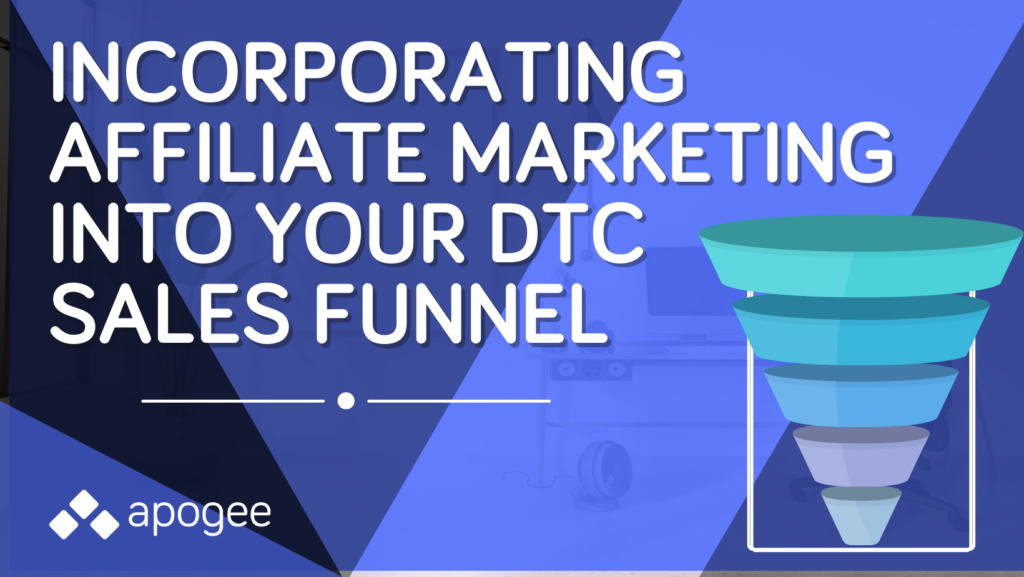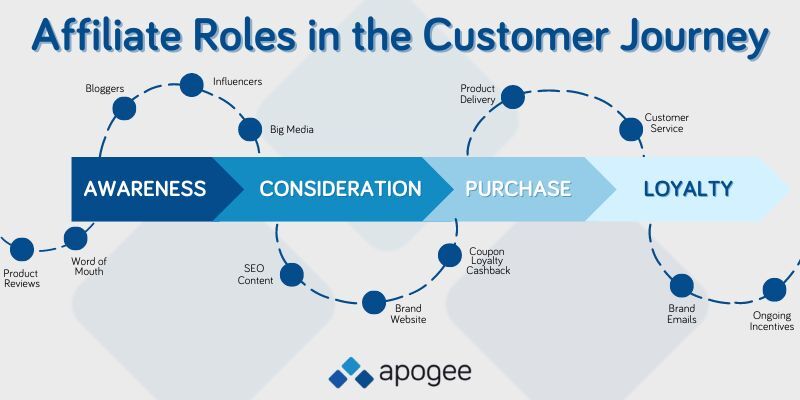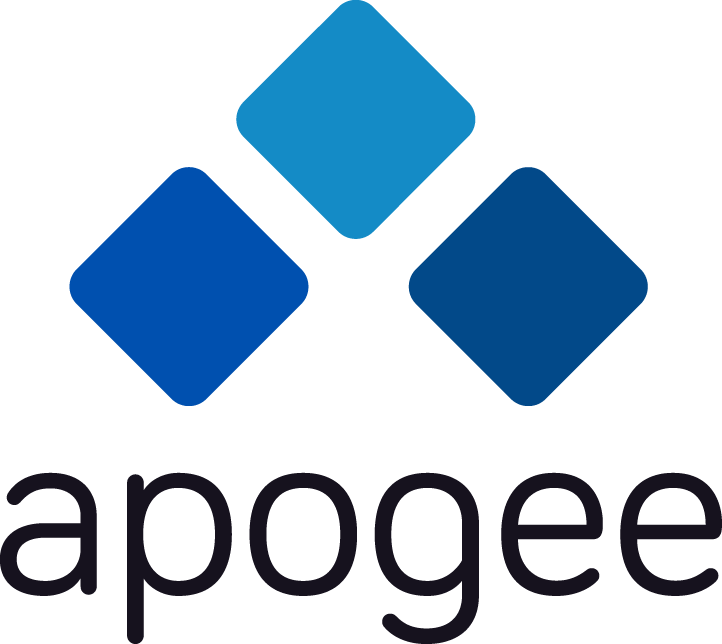
Have Coupons Gone From Cash-Cow to Cash-Cannibal?
September 19, 2023
What to Expect from an Affiliate Manager: A Merchant Guide
October 30, 2023In the world of Direct-to-Consumer (DTC) brands, few things are more crucial to success than a strong sales funnel. At the same time, affiliate marketing has emerged as a powerful, comparatively low-cost strategy for expanding brand reach and boosting sales. What happens when you combine the two? In this article, we explore the synergy of incorporating affiliate marketing into your DTC sales funnel.

Understanding Affiliate Marketing
Affiliate marketing is a performance-based marketing strategy in which brands partner with individuals or entities (who we call affiliates or partners) who promote their products or services in exchange for a commission on sales generated through their efforts. Affiliates include large publishers such as Conde Naste and Katie Couric Media, coupon and loyalty sites such as Honey and RetailMeNot, content creators, bloggers, influencers, and email marketers.
How Does Affiliate Marketing Work?
Affiliate marketers use unique tracking links when driving traffic to a brand's website. Affiliates create content promoting the brand, creating desire for the brand or product, and encouraging their readers or audience to click through and make a purchase. When a referred visitor makes a purchase, the affiliate earns a commission. It's a win-win: the brand gains more customers, and the affiliate earns income.
The DTC Sales Funnel
While many things have changed about marketing over the years, the stages of the DTC sales funnel have mainly stayed the same. Brands and affiliates alike face the challenges of overcoming consumer behavior to gain market share. The sales funnel is a visual representation of the customer journey, divided into stages.
Awareness Stage
The funnel begins with the Awareness stage, where potential customers first learn about your brand. In this stage, the primary objective is to cast a wide net and make your brand known to potential customers.
Content from affiliate marketers can play a pivotal role in the Awareness stage. Whether it's through informative blog posts, engaging social media content, or eye-catching visuals, content acts as a beacon that attracts and captivates your target audience.
Consideration Stage
Customers in the Consideration stage are actively researching products or services. Affiliates can create content that provides valuable information and influences their decision-making. Savvy affiliates have built an engaged and loyal audience who trusts their word and opinions and are more likely to purchase based on their recommendation.
In this phase, affiliate content needs to go beyond surface-level information and dive deep into the benefits of your products or services. Affiliates need the opportunity to experience your brand to gain first-hand knowledge that they can then share. Product review opportunities and a hybrid of sponsored affiliate campaigns work well. Learn more about the $500 Affiliate.
Conversion Stage
The Conversion stage is when a customer decides to make a purchase. Affiliate marketing can help push prospects over the edge by offering incentives such as limited-time offers, exclusive discounts, and compelling calls to action.
In this stage, it's crucial to make the conversion process as simple and straightforward as possible. Ensure that your website is user-friendly, with a seamless checkout experience. Offer multiple payment options to cater to diverse preferences. Provide clear and compelling reasons for prospects to take that final step and become customers.
While it is up to the affiliate to create the desire and get the consumer to your website, conversion is ultimately up to the brand.
Post-Purchase Stage
The customer journey doesn't end with a purchase; it merely enters a new phase. In the Post-Purchase stage, your focus shifts to nurturing and retaining customers. This stage is about building lasting relationships and fostering brand loyalty. Affiliates can continue to engage and nurture these relationships, helping to ensure repeat business.
Affiliates can also introduce existing customers to complementary products or upsell them on higher-value items, boosting your revenue. By working closely with your affiliate partners and continuing to provide them with the tools they need to promote your brand, you can form mutually beneficial relationships that last for years to come.

Integrating Affiliate Marketing
Affiliate Marketing in the Awareness Stage
Content creators, including influencers and bloggers, can introduce your brand to their followers through informative articles, reviews, and social media content.
Bloggers, with their well-crafted narratives and authentic voices, serve as the bedrock for brand advocacy. Their ability to dive deep into a product's features and benefits through engaging product reviews resonates with discerning consumers seeking trusted opinions. Strategically managed affiliate partnerships incentivize bloggers to continue to share their love for your product over and over again.
Influencers, armed with engaged social media followings, are skilled in generating buzz and sparking conversations. Their real-time engagement with audiences adds an element of immediacy and relatability, making them invaluable for viral marketing campaigns.
Together, bloggers and influencers act as a dynamic duo, amplifying brand visibility, credibility, and reach. As bloggers craft comprehensive narratives, influencers disseminate bite-sized content that sparks curiosity and drives traffic. This multifaceted approach to digital marketing ensures that brands not only gain exposure but also foster a loyal customer base.
Affiliate Marketing in the Consideration Stage
In the world of Direct-to-Consumer (DTC) sales, affiliate marketers play a crucial role in guiding consumers through the consideration phase of the sales funnel. In this phase, potential buyers weigh their options and make informed decisions, and affiliates contribute significantly to this process.
Affiliates create content that provides valuable insights, authentic personal experiences, and product reviews. They create a bridge between the brand and the consumer, answering queries and conversationally sharing information. By strategically placing affiliate links within their content, affiliates drive interested users closer to the conversion point. When consumers are actively searching for information and recommendations, they encounter this content, which helps them understand and evaluate products.
Affiliate marketers act as intermediaries between brands and consumers during the consideration phase, making the sales funnel more user-friendly and informative. They transform curiosity into confidence, guiding individuals toward making well-informed choices in the DTC landscape.
Affiliate Marketing in the Conversion Stage
Equipping your affiliates with enticing sales elements like discount codes, exclusive promotions, and limited-time offers is key to moving your prospects through the DTC sales funnel. These incentives act as powerful triggers, motivating consumers to take that final step toward making a purchase.
With their detailed and informative posts, bloggers provide valuable insights that aid consumers in the final decision-making process. They break down product features, benefits, and user experiences, helping consumers feel more confident in their choices. Influencers, with their personal touch, create a sense of trust and relatability, making the audience more receptive to the affiliate's message.
These two powerful partner types create a harmonious environment where consumers are not just tempted but encouraged to make that vital leap from consideration to conversion in the DTC sales funnel.
Affiliate Marketing in the Post-Purchase Stage
The role of affiliate marketers does not have to end when customers make a purchase. In the post-purchase phase of the DTC (Direct-to-Consumer) sales funnel, bloggers and influencer affiliates can continue to shine. Once a consumer has made a purchase, their journey is far from over, and bloggers and influencers step in to enhance the experience.
Affiliates can introduce customers to your loyalty program, help promote the release of new products, highlight the long-term quality and results of your products, and more. Because of how affiliate marketing works, these content creators are incentivized to continue their promotions of your product or services again and again.
Measuring and Analyzing Affiliate Marketing Performance
Affiliate marketing is a potent strategy for brands, but its success hinges on effective performance measurement and analysis. Whether partnering with bloggers, influencers, or other affiliates, tracking and evaluating the results is essential.
Tracking clicks and conversions is fundamental. It helps you understand which affiliate efforts drive traffic and, more importantly, conversions. Utilizing a quality affiliate tracking platform provides insights into what's working and what needs adjustment.
KPIs (Key Performance Indicators) give a comprehensive view of your affiliate marketing performance. They can include impressions, click-through rates (CTR), conversion rates, and other metrics. These indicators help you set benchmarks and assess the effectiveness of different affiliates.
ROI (Return on Investment) or ROAS (Return On Ad Spend) are critical metrics to gauge the success of your affiliate marketing strategy. It tells you whether your affiliate marketing efforts are profitable. By comparing the investment in the program to the revenue generated, you can assess its financial impact.
Analyzing affiliate marketing performance is an ongoing process. Regularly reviewing data and adjusting your strategy based on insights is key to optimizing your results. By staying attuned to affiliate efforts, you can fine-tune your program, maximize ROI, and build lasting partnerships with bloggers and influencers.
Challenges and Solutions
In affiliate marketing, brands often grapple with attribution challenges. Determining which marketing efforts contribute most significantly to conversions can be a complex puzzle.
One of the primary attribution challenges is the lack of visibility into the entire customer journey. Traditional tracking methods may not capture the full spectrum of touchpoints, making it difficult to attribute conversions accurately.
For example, a consumer may launch TikTok on their phone while standing in line on their lunch break from work. They see an affiliate’s video promoting a great product they know will make their life easier. That consumer makes a mental note to purchase the product when they get home. Later that evening, the consumer fires up their home computer to make the purchase and googles the name of the product they saw on TikTok. The SERPs provide a sponsored ad from the brand, which the consumer clicks on. Once on the site, the Honey Toolbar activates with an exclusive discount code, which the consumer uses to make the purchase.
In this example, the attribution will show as a split between the Google ad and the loyalty giant Honey, despite the TikTok affiliate’s initiation of the sale.
To address this, brands are increasingly turning to advanced tracking methods. These methods, like multi-touch attribution models and pixel tracking, offer a more comprehensive view of the customer journey. They help identify the various interactions that lead to a conversion, giving credit where it's due.
Another challenge is discerning the total impact of different affiliates, especially in scenarios where multiple affiliates are involved in a customer's path to purchase, like in our example. This complexity often leads to debates over who deserves credit for a sale.
Despite these challenges, affiliate marketing remains a powerful, cost-effective strategy for brands. By implementing advanced tracking methods and collaborating closely with bloggers and influencers, brands can gain better insights into the contribution of each affiliate, ultimately optimizing their marketing efforts for maximum impact.
Tools and Platforms
The importance of using an affiliate tracking network cannot be overstated. Whether you're collaborating with bloggers or influencers, having a reliable tracking system in place is vital to success.
First and foremost, an affiliate tracking network provides a centralized platform for managing and monitoring your affiliate program. It streamlines the process of tracking referrals, sales, and commissions, saving you time and effort.
One of the primary advantages of using an affiliate tracking network is the ability to leverage advanced tracking methods. These methods, such as cookie tracking and IP tracking, allow you to accurately attribute conversions to the right affiliates, ensuring fair compensation for their efforts.
Moreover, these networks offer transparency and accountability. Both you and your affiliates can access real-time performance data, making it easier to assess the effectiveness of your partnerships and make informed decisions.
For bloggers and influencers, using an affiliate tracking network also means they can trust that their efforts will be properly rewarded. It fosters trust and encourages them to continue promoting your products or services.
In essence, an affiliate tracking network is the backbone of a successful affiliate marketing program. It not only simplifies the process but also ensures fairness and transparency, benefiting both brands and their affiliate partners.
Success Stories
Case Study 1: CEFALY's Journey
CEFALY partnered with Apogee to raise awareness of their migraine prevention device, with the ultimate goal of increased e-commerce sales. With two primary devices and assorted accessories, the challenge to Apogee was to narrow the focus and target media partners who promote migraine solutions.
Apogee utilized a strategy that included a hybrid of PR and affiliate with key influencers, big media, and coupon partners. By implementing a full-funnel approach, Apogee achieved the sales goal while building a long-term foundation for success.
Results: Apogee engaged social media creators to construct 49 exclusive, targeted promotions of the CEFALY device. The campaign resulted in 305 million views, 772,000 social views, 1.3 million social engagements, and a 485.37% ROAS.
Case Study 2: Name Bubbles Nailed It
Name Bubbles partnered with Apogee to increase brand awareness and grow the revenue for their customizable clothing and accessories labels for kids.
Apogee worked diligently with content creators on multiple campaigns to economically reach new audiences with enough touch points to convert readers without needing additional marketing resources such as paid social and paid search.
Results: Through ongoing content campaigns, Apogee has engaged 360 active content affiliates who have generated $3.5M gross revenue through the channel at a 1,663.1% ROAS.
Conclusion
Incorporating affiliate marketing into your DTC sales funnel can be a game-changer, enabling you to reach a broader audience, enhance customer engagement, and boost revenue. By strategically integrating affiliate marketing at each stage of the sales funnel, measuring performance, addressing challenges, and leveraging the right tools, you can unlock the full potential of this dynamic marketing strategy. It's a win-win for DTC brands and affiliates alike, propelling your brand toward sustained success in the digital era.




